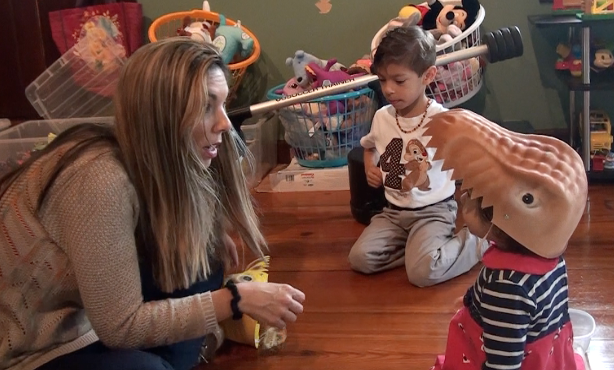
Right around 15 months functional play, sometimes called pretend play starts to emerge. During this phase of play, toddlers begin to use toys in the way they are intended. For example, your toddler might bring a toy phone to his ear and “talk” on it or he might hammer with a play hammer. This stage usually starts around 15 months and lasts until approximately 24 months. When you start to see this functional play, it is a good sign that the cerebral cortex, the part of the brain responsible for some higher-level thinking, is beginning to develop. It will continue to develop well into adolescence.
You can encourage functional play by participating in guided play. Include yourself in her play by providing the toys and objects and responding to what she shows interest in. If she reaches for a baby doll, help her get it or hand it to her, say what it is called, and model how to play with it. When she holds it like a baby, use encouraging words to affirm her actions. If she bangs it on the floor, allow her to explore it in that manner for a period of time, then show her how to play with it appropriately. If she mirrors your demonstration, she is ready to start to move into the functional play stage. If not, she needs to spend more time in Sensorimotor play. Either way, provide support and reassurance.
Keep providing her with toys that have a purpose and model their use. Talk to her as you do that, explaining what the toys is and how it can be used. Don’t be alarmed if some toys still go in her mouth. She is still learning about her world and her mouth has a lot of nerve endings and provides her with a lot of information.
Some 15-month-old toddlers are still only playing in solitary play, but some will start to engage in parallel play, where they play side-by-side with another child. They are still only engaged in their own separate activities, but there is an awareness of each other and they will purposely play side by side. They may even imitate each other, but they do not interact in their play.
References:
Zero to Three
American Academy of Pediatrics

